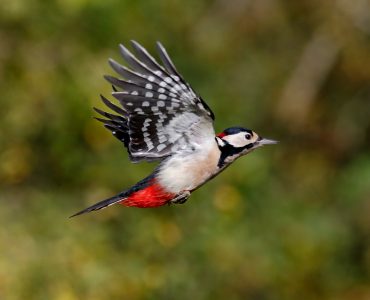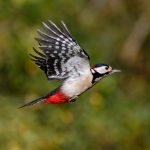The bird is scientifically known as Picoides minor and belongs to the family of woodpeckers, which is picidae. The bird has been under a scanner for its similar characteristics to downy woodpecker. There are lots of subspecies of this bird which have been recognized and seen in the range where they are found.
The bird is quite smaller in size and can be found sitting at tall trees around forests and parks. The size helps it to go unnoticed since its colour would not also reveal its presence. The bird though can be spotted with its narrow bars on the lower back and broad barring on the wings. It can be up to 15cm in length and 26 cms in width, with its wingspan. The bird weighs up to 21 grams and always breeds in pairs. They are present throughout the year but the numbers keep fluctuating due to their nomadic living.
The appearance of the male and female birds is quite different and spotting is much easier. The male bird would have a crown, crimson in colour made up of feathers on its head. The forehead would be of brownish colour with a black stripe towards the neck. The upper back of the bird is black in colour, with its nape too in black colour. There are barred patterns on its back which are in white & black colours. The wings are quite broader and have more bars on them. The same patterns can be established on the tails too. The under parts can be with white streaks on them and the legs & bill coloured a slated-grey. The female on the contrary would have the crown in white colour. Juveniles would have a crimson crown on their heads and there are no seasonal changes in the colour of this bird.
It makes a ‘keek’ sound repeatedly and quite loudly. It also makes rattling sound while the courtship begins and that’s almost symbolic. The bird loves to eat insects and that’s the primary food for them. The bird reads the symbols from the litter on the foot of the tree, to establish the presence of wood boring larvae. Then it reaches the top portion of the tree and attacks for its prey. The bird then roosts in old holes through the nights. The population of these birds is quite high but they tend to be nomadic, for they keep changing their places and hunting grounds.
The bird lays around 5 to 8 eggs which appear quite well polished and refined, white in colour. Both the male and the female birds help in the incubation and the previously used hole is enlarged or used for this purpose. The eggs can be around 18 to 14 mm in size. The young ones which come out of those nests are fed by both the parents and this activity is taken quite seriously. The numbers of these birds have been declining rapidly and have been placed on the red list as declining species, probably caused by deforestation of land.
Lesser Spotted Woodpecker:
Let us know if you liked the post. That’s the only way we can improve.








